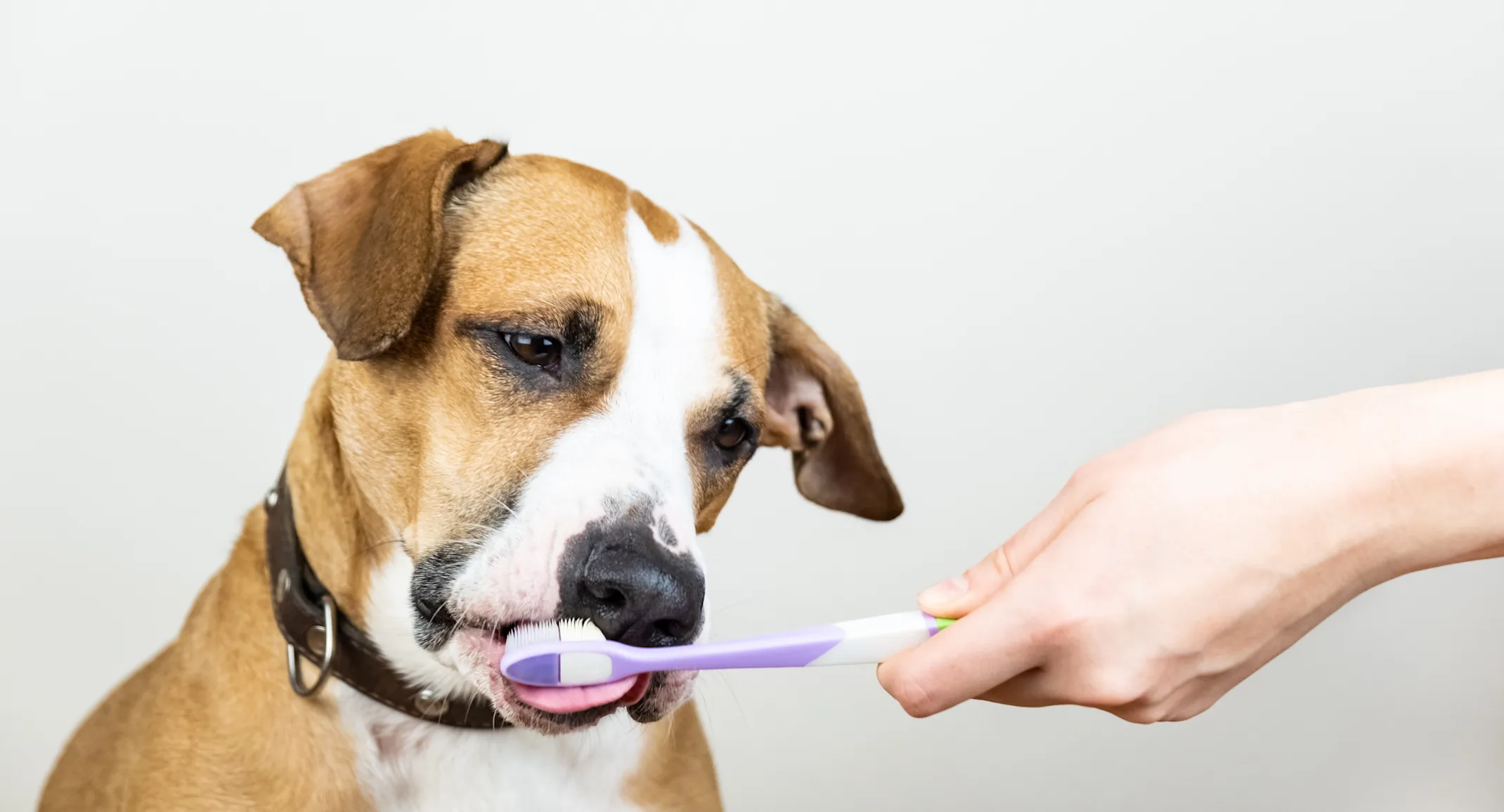UNDERSTANDING PET DENTAL DISEASE
Cats and dogs don’t often struggle with cavities, the way people do. Instead, poor oral health manifests in gingivitis (gum inflammation) and periodontitis.
Bacteria in the mouth combine with food particles to form plaque, which sticks to the teeth. Within days, plaque bonds with minerals in the saliva, forming tartar. The bacteria work their way under the gums and cause gingivitis.
Once under the gums, bacteria then destroy the support structures of the tooth, leading to tooth loss. This condition is known as periodontitis. Gingivitis and periodontitis make up the changes that are referred to as periodontal disease in pets. Bacteria that cause periodontal disease can also travel in the bloodstream to affect internal organs such as the kidneys, liver, and heart.
Pain In The Jaw?
Bad breath is the first sign of periodontal disease. By the time pets are 4 years of age, over 85% have some form of dental disease. And although pets may be in pain, owners often don’t notice the signs of disease until it is well advanced. This is one reason we advocate for regular wellness exams, which can catch dental disease early.
Please call us to schedule an appointment if you notice:
Bad breath
Excessive drooling
Swollen mouth, gums, or jaw
Red or bleeding gums
Obvious pain
Loose teeth
Yellow or discolored teeth
Difficulty eating, which sometimes manifests as messy eating
Chewing on one side of the mouth
Pawing at the mouth
What’s The Remedy?
Fortunately, pet dental disease is preventable:
Regular inspection of your pet’s mouth is important to catch dental disease in the early stages.
Professional dental cleanings remove plaque and tartar from the teeth surfaces and also below the gum line.
Dental x-rays give us a complete picture of dental disease both above and below the surface, which is not visible to the naked eye.
Dental cleaning eliminates sources of infection to the mouth and other organs, and protects your pet from and tooth loss.
Home Sweet Home
A program of at-home dental care can keep your pet’s teeth healthy in between cleanings.
Just as in people, daily tooth brushing can help remove food particles and bacteria from your pet’s mouth. You can use a finger brush or a child’s toothbrush and pet-specific toothpaste (never use human toothpaste for pets!) We can share any pointers you need on how to brush your pet’s teeth at home.
Other at-home care may include:
Dental diets
Dental chews and treats
Water additives and rinses
Ask your veterinarian which diets or treats might be appropriate for your pet.
Your pet’s dental health is just as important as complete nutrition or regular exercise – it’s a basic requirement for a healthy, happy pet. Great dental care is our priority, and our veterinarians and staff are always here to support the health of your pet. Please give us a call if you have any questions or concerns.

